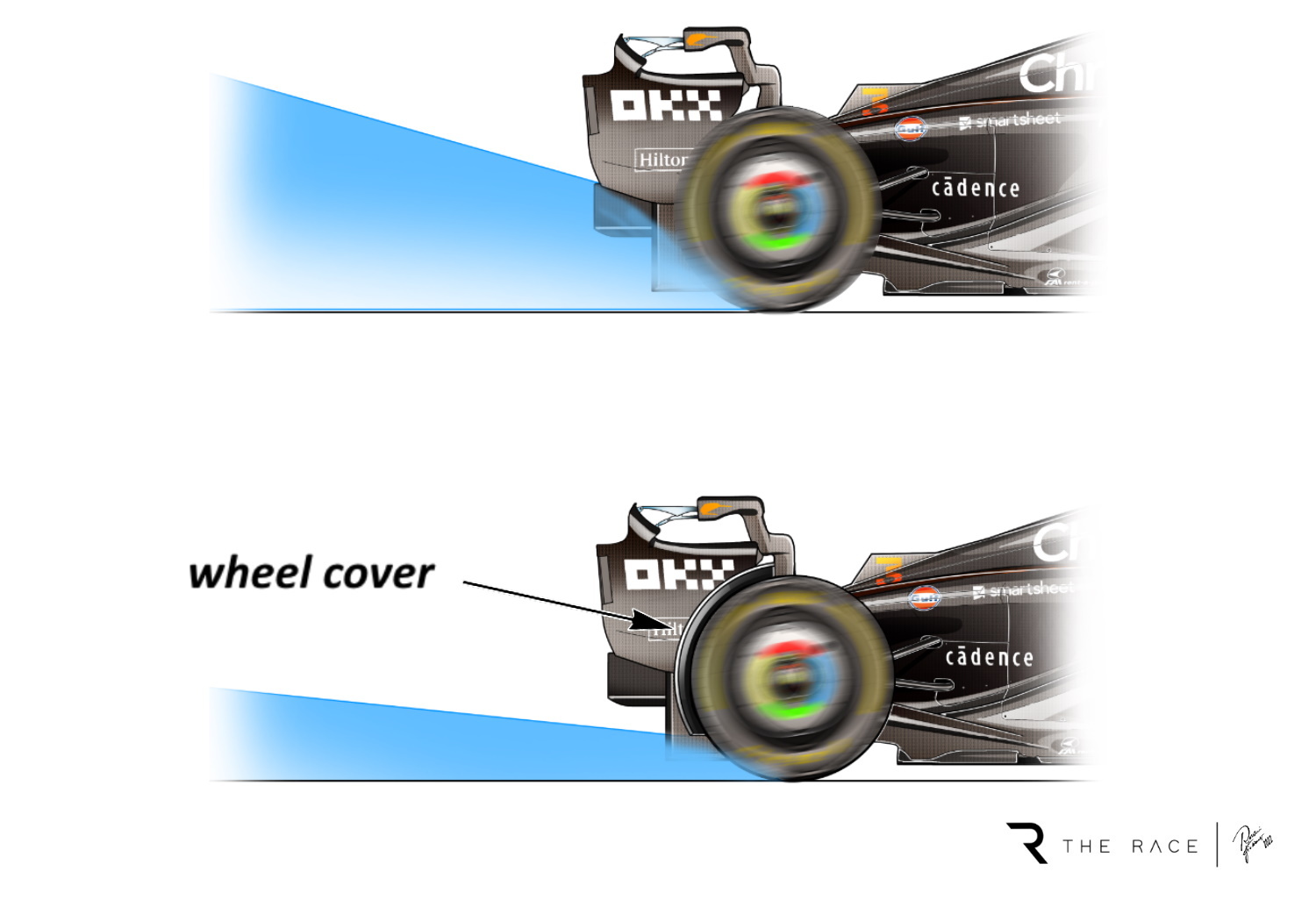Up Next

Formula 1’s prototype standard-specification wheel arches to be fitted to cars in wet conditions will be tested on track for the first time after the British Grand Prix.
The FIA announced last year that work is underway on evaluating using such wheel arches to improve visibility in wet races by reducing spray. These would not be a permanent addition to the cars, but could be easily attached to the car for wet conditions should they arise either before a race or during a red-flag stoppage.
Nikolas Tombazis, head of the FIA F1 technical department, said the project was started because of the desire to prevent a repeat of the 2021 Belgian Grand Prix, with a result declared based on a single lap under the safety car with reduced points awarded, that “left scars on the sport”.
When the proposal was originally announced, there was the hope it could be introduced as early as the back end of this year. This would be subject to the design being proven effective – and introduction in 2024 was always more likely anyway.
Significant effort has been put into understanding not only the ability of wheel arches to contain the spray but also how this interacts with the airflow wake characteristics of the ground-effect Formula 1 cars. This is particularly important given they will be a spec part, meaning they must produce a similar effect from car to car.
So far, the R&D work has been done using simulation tools such as CFD. This means the Silverstone running will be the first time to trial them on actual cars to gather real-world data.

The test will take place next Thursday (July 13) following the post-British Grand Prix Pirelli tyre test, which will be the final opportunity to run the prototype blanketless slick tyres ahead of a potential vote on them being used in 2024.
Mercedes is providing a car running the wheel arches to allow data to be captured to validate and augment the simulation work already done.
McLaren will also participate with Oscar Piastri driving, but that will be running in standard trim to gather control data to compare to the Mercedes.
The test is set to be run only using a single straight, which be artificially soaked in order to allow aerodynamic data to be collected evaluating the impact of the wheel arches. This will be used to inform the ongoing research and development programme. Pirelli’s 2023 wet tyres will be used.
Speaking at the end of last year, Tombazis explained the rationale behind the introduction of the wheel arches.
“We only think it’s going to be something that hopefully gets used on a couple of occasions a year, maybe three,” said Tombazis. “We don’t want it to be every time there’s a drop of rain.
“Currently, you almost never race with the wet tyres, so I think it will bring it well into the wet tyre territory.”
Pirelli F1 boss Mario Isola indicated last year that if the wheel arches are introduced, they would likely need to be paired with a new specification of wet and intermediate tyre because said introduction could lead to cars running with more water on the track than they are currently able to.




